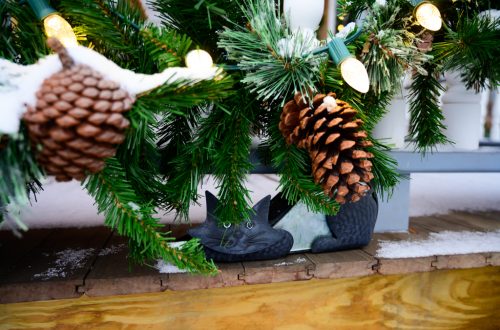More Woodworking: A New Router Table Fence
 Hello everyone! I had a little more time in the shop this weekend, so I tackled another project that has been waiting for time: My router fence.
Hello everyone! I had a little more time in the shop this weekend, so I tackled another project that has been waiting for time: My router fence.
The old fence was a little, um, simplistic:

I built this table a long while ago. It was one of the first projects I built in the shop when I moved it from my parents’ basement to ours. It is a 24″ square top with a router base mounted to the underside. The table is ultra stable, built out of 1″ thick poplar frame members, tied together with sliding dovetails. The top is 3/4″ MDF, fastened directly into 1″ poplar table supports tapped to accept the table bolts. There is an overhang on all sides to support clamping jigs and fixtures, and the router is mounted in the center to provide all-around support for freehand routing of larger pieces.
It’s funny, but I don’t remember the first project I built using this table. I remember that I needed to have it functioning, though, and didn’t have time to work on a proper fence. I had a strip of MDF left over from building the top, but it was slightly bowed. That wouldn’t do. So I took a strip of walnut scrap that was square, and sunk six screws through it into the back of the MDF. Voila, a straight fence. Two bar clamps completed the, um, simple package. I used a jigsaw to hack-out a clearance hole for the router bit, and we were off to the races.
That dead-simple fence has served me pretty well. It wasn’t perfect–the clearance hole wasn’t adjustable, so smaller pieces wanted to get sucked into the bit; accurate or small movement wasn’t really possible; there was nowhere to clamp vertical fixtures, like feather boards, stop blocks, etc. It worked, though.
On my coat rack project, I was using the table to cut cope-and-stick frame pieces, and was fighting the fence and the lack of an adjustable clearance slot. I decided it had to go, and I had to spend some time building something better.
Last weekend, when I was working on the clothes drying rack, I started to put some ideas together for a new fence. I made a few sketches, determined some dimensions, and started to figure out how to put it all together. I found some MDF that I had made into a planer sled that I stopped using once I got a jointer. It was just about enough for what I wanted to do, so it came apart and I started to mill it into appropriately-sized pieces. I cut an oversize clearance hole into both the bottom plate and front face, and then chamfered the edges to help with dust collection.
The final design, as shown in the photo that opened this post, is an L-form with gussets for support and to help keep the face flat and square. The form was assembled with pocket-hole screws and glue. I fastened the bottom plate to the face first, and then fastened the gussets between the bottom plate and face to pull everything into square. The face was designed to have two sliding bearing faces that could be adjusted to vary the clearance opening. Above those adjustable faces is supposed to be a fixed face with a piece of T-track along its face to allow feather boards and jigs to be clamped directly to it. I ran out of MDF, though, so that will have to wait for a bit.
The adjustable faces were cut from the old fence. I sliced-off some damage on both sides, and of course the craptastic clearance hole from the center. I then used the half-completed fence, clamped to the table surface, to help me rout the dados to hold the T-track. Two T-bolts through each half of the front face of the L-form ride in that T-track to allow the bearing faces to slide.

The T-bolts were spaced so that I could get my hands behind them easily to adjust them when necessary. I wanted to get two fasteners on each side to help pull the pieces flat. Here’s a view from the rear of the fence:

Once the fence was together, the last thing to do was to rout two dados to hold the T-track in the top, which would allow the fence to slide back and forth along the table surface (and, finally, remove the two goofy clamps and let me put those back into use as clamps!). Out of the whole endeavor, this was the part that made me most nervous, I really, really, really didn’t want to have to make a new top. If I routed these out of square or something, it was game over, and I would need to make a new top. Fortunately, I have a good set of clamping guides, and those totally saved the day. I squared them to the back of the table, so that they were both referenced from the same face, and went to town with a plunge router.

Now the fence has some really good adjustability. It is fairly massive and doesn’t move. I think it will maintain square pretty well. You might be wondering why I left the bottom plate as long as I did. Well, I originally intended to have two sets of lock-down knobs. It turned out that I didn’t really need that much clamping pressure, though, so I just went with one. I still need to do a few things, including building a small box with a dust fitting to fit over the clearance hole in the back of the fence–that will really help with dust collection while routing. Until now, I’ve set the 4″ dust collector hose right behind the bit and clamped it down with a piece of wire. That was really silly, but it was better than nothing. I also have to finish the top face, but I’ll have to grab some more MDF before I can do that.
I got the T-track, T-bolts, and jig knobs from Rockler. It cut and milled really easily, which was nice. The only thing I had to do was drill and countersink a few extra screw holes in the T-track I mounted in the table surface. Since that was going to be under some pretty constant stress, I wanted to make sure it was well-anchored to the table surface. Hooray for getting the little drill press fixed a few weeks ago–between the clothes drying rack and this, that little machine has gotten some pretty serious usage lately.
To finish up this project, I waxed the table surface and all of the fence surfaces, and wood just glides across the table and fence soooooo smoothly now. The fence is really easy to adjust, and I have a clearance control system that actually works now! It took a day total, but it was completely worth it.


